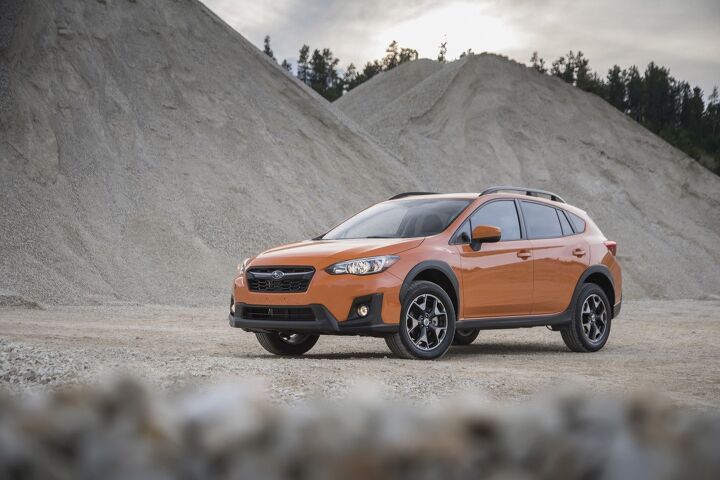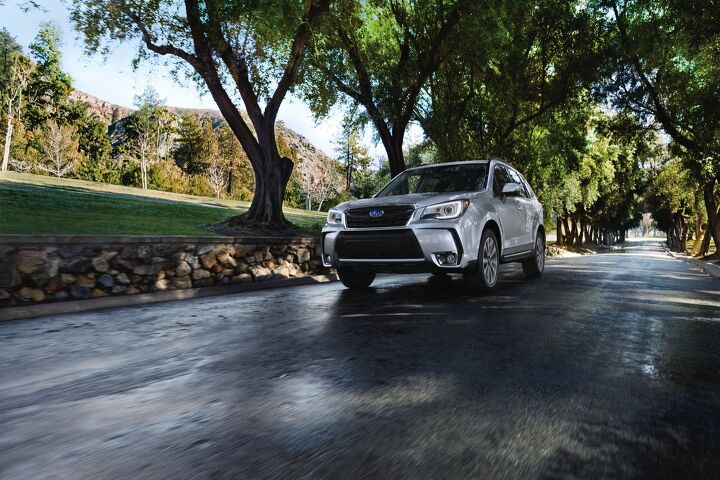QOTD: Can Subaru Just Go Ahead And Sell Whatever It Wants, Wherever It Wants, Whenever It Wants?
In September 2017, Subaru reported the company’s 70th consecutive year-over-year U.S. sales increase. That’s nearly six complete years of steadily improving U.S. sales volume.
Think of it this way: 2013 was a huge year for Subaru of America as sales had risen 59 percent over the span of just two years. But in 2013, Subaru sold 424,683 over the course of the entire calendar year. In 2017, that’s a total Subaru blasted past in the first week of September.
But have you ever stopped to notice that Subaru is accomplishing much of its success with three remarkably similar variations of the same theme? Crosstrek, Forester, Outback. A bit of extra length there, a touch of extra height here, a smidgen of savings there, a dose of extra equipment here. This is hardly the historically obvious 3 Series to 5 Series to 7 Series lineup. The Crosstrek, Forester, and Outback are conceptually similar vehicles with overlapping price spectrums. And recently, with a huge leap in Crosstrek popularity, they’re all similarly popular, too.
You almost get the sense Subaru could squeeze an Outback “four-door coupe” in there and sell 12,000 of those each month, too.
Or could they? Is the huge success of Subaru in 2017 — consistent U.S. sales growth despite a market-wide slowdown — something of a peak, nothing more than the result of inflated demand for a lineup temporarily perceived as hot?
In September, Subaru of America reported 12,491 Crosstrek sales. That’s a September record, the second-best month ever (after August’s record) and just the third month in the nameplate’s history in which the newly relaunched Crosstrek entered five-digit territory. Crosstrek pricing stretches from $22,710 to $27,210.
Subaru also sold 13,262 Foresters in September, a sharp 17-percent year-over-year drop for the Forester but still the model’s 50th consecutive month above the 10K marker. Forester pricing starts just beyond the base Crosstrek at $23,710 but reaches to a higher $37,005.
Then there’s the Outback, now Subaru’s best-selling model with 140,491 sales so far this year. September volume slid slightly, 4 percent, to 16,330 units. Outback pricing starts at $26,810, only $2000 beyond the basic Forester automatic, and soars to $39,605.
The Crosstrek, Forester, and Outback accounted for 76 percent of Subaru’s September volume.
September’s huge 51-percent Crosstrek uptick came as sales of its donor vehicle, the Impreza, jumped 32 percent. While industry-wide September incentives rose 1.5 percent, year-over-year, to $3,742 per vehicle according to ALG, Subaru’s average discount fell 6 percent to only $1,026. The auto industry’s average transaction price fell 1 percent; Subaru’s ATPs ticked up by a tenth of a percent. The industry discounted vehicles by an average of 11.5 percent in September. Subaru cut prices by less than 4 percent. Together with the Crosstrek’s rise, these financial tallies help explain the acceptable losses in Forester and Outback sales — Subaru refuses to play that game.
Is the current wave of Subaru acceptance anywhere near cresting, or could Subaru theoretically position another mid-$20,000s two-row crossover and find itself in short supply of that vehicle, too?
Subaru won’t test that theory, of course. The next vehicle stretches the range on the north side. The Ascent will be Subaru’s flagship vehicle. Based on current trends, it seems as though Subaru won’t be able to build enough to sate demand.
Can Subaru just do as it pleases, build whatever it wants, and find even more buyers than it thought possible? Or will America’s Subaru affection soon max out?
[Images: Subaru]
Timothy Cain is a contributing analyst at The Truth About Cars and Autofocus.ca and the founder and former editor of GoodCarBadCar.net. Follow on Twitter @timcaincars and Instagram.
More by Timothy Cain
Latest Car Reviews
Read moreLatest Product Reviews
Read moreRecent Comments
- Golden2husky The biggest hurdle for us would be the lack of a good charging network for road tripping as we are at the point in our lives that we will be traveling quite a bit. I'd rather pay more for longer range so the cheaper models would probably not make the cut. Improve the charging infrastructure and I'm certainly going to give one a try. This is more important that a lowish entry price IMHO.
- Add Lightness I have nothing against paying more to get quality (think Toyota vs Chryco) but hate all the silly, non-mandated 'stuff' that automakers load onto cars based on what non-gearhead focus groups tell them they need to have in a car. I blame focus groups for automatic everything and double drivetrains (AWD) that really never gets used 98% of the time. The other 2% of the time, one goes looking for a place to need it to rationanalize the purchase.
- Ger65691276 I would never buy an electric car never in my lifetime I will gas is my way of going electric is not green email
- GregLocock Not as my primary vehicle no, although like all the rich people who are currently subsidised by poor people, I'd buy one as a runabout for town.
- Jalop1991 is this anything like a cheap high end German car?




































Comments
Join the conversation
I've been wondering why anyone would pay money for a Subaru - not bad, but nothing exceptionally great - and I feel like there's a lot of elderly people who buy these cars and Kia Souls, and I think there are two main reasons. 1) When you sit in the driver's seat the H-point is nearly at the same height as a standing, so you don't really sit "down" you just pull your knees and feet up into the car, and when you exit, you don't have to work your thighs to "sit up". 2) Price - they're inexpensive.
I enjoy driving. Subarus are not fun to drive. Most Subaru owners view them them the same as they do an Appliance.... they want it to do its job reliably. I am more of a fleet operator.... a car for the city which is a 2016 VW SportWagen a car for road trips which is a 2009 BMW 335d and a truck for towing and Hauling which is a Nissan Titan modified with big brakes and airbags. When my new house in Kiowa Colorado is done I will trade the Sport Wagon for an Alltrack